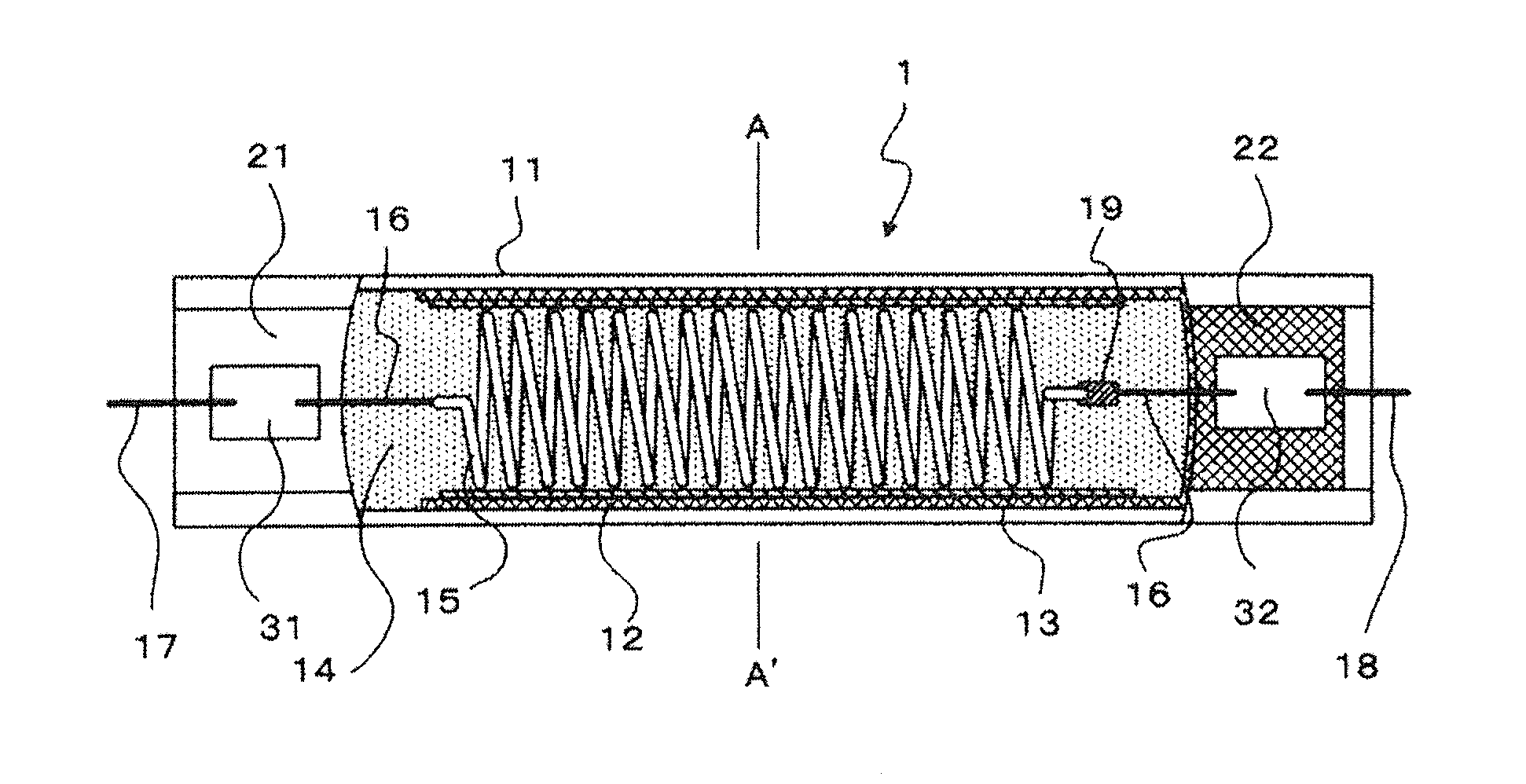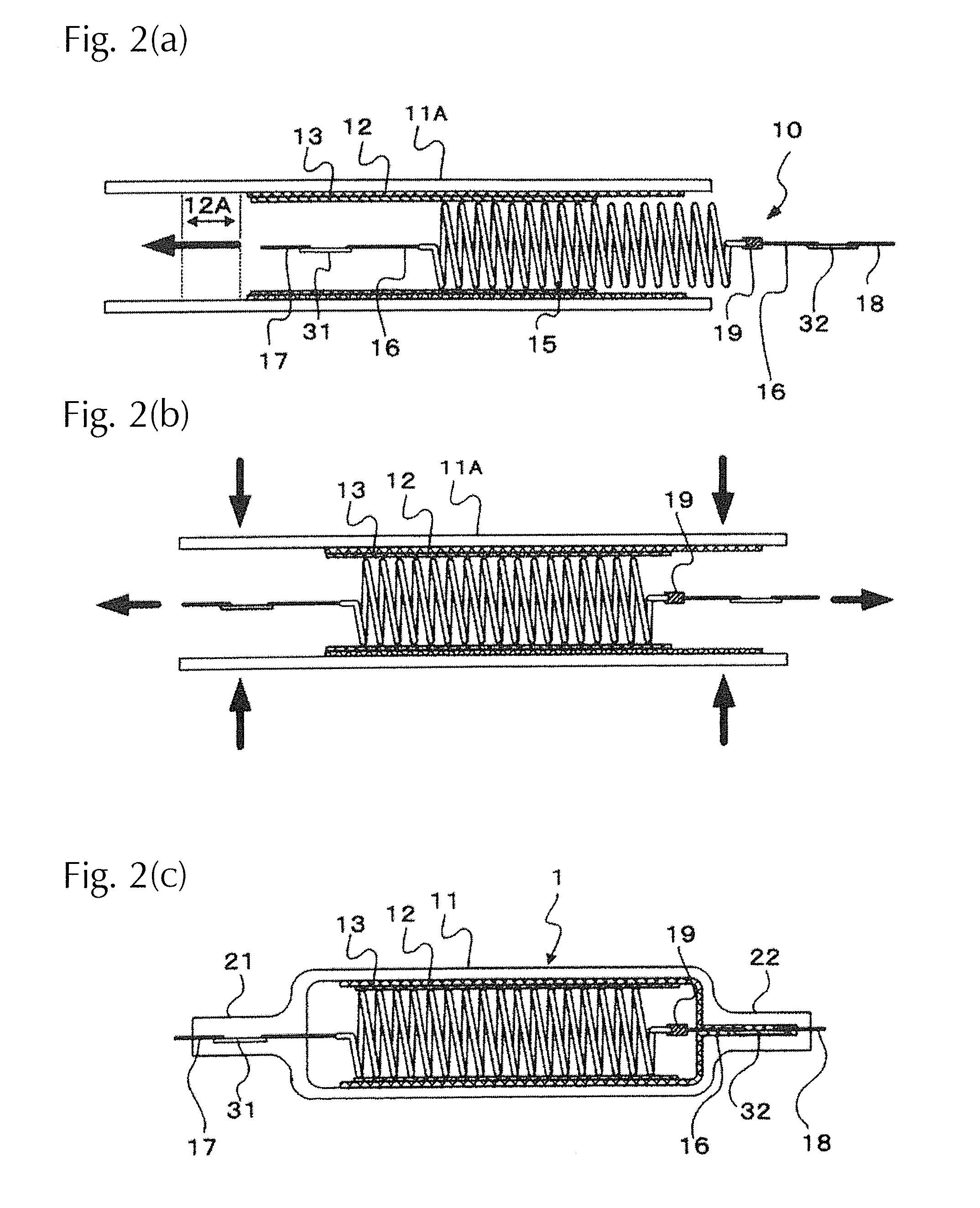Dye-sensitized solar cell
a solar cell and dye-sensitive technology, applied in the field of dye-sensitive solar cells, can solve the problems of high production cost and large installation area of large-area cells, and achieve the effects of no deterioration, stable utilization, and reduced thermal stress caused by the difference between expansion and shrinkag
- Summary
- Abstract
- Description
- Claims
- Application Information
AI Technical Summary
Benefits of technology
Problems solved by technology
Method used
Image
Examples
Embodiment Construction
[0027]FIG. 1(a) shows a cross-sectional view of a dye-sensitized solar cell according to an embodiment of the present invention along the direction of the tube axis, FIG. 1(b) shows a cross-sectional view of a state wherein only the sealing portion of FIG. 1(a) has been rotated for 90°, and FIG. 1(c) shows a cross-sectional view of A-A′ in FIG. 1(a) along the direction of the tube diameter.
[0028]At the inner surface of a tube-shaped vessel 11, a transparent conductive film 12 and a photoelectrode 13 being formed on this transparent conductive film 12 are provided sequentially. In the interior of the tube-shaped vessel 11, a coil shaped counter electrode 15 is arranged along the longitudinal direction. Both ends of the tube-shaped vessel 11 are sealed, and an electrolytic solution 14 is enclosed with the interior thereof.
[0029]Below, each structure will be explained concretely. In the following explanation, the right end part in the drawing will be referred to as ‘the one end part’ w...
PUM
 Login to View More
Login to View More Abstract
Description
Claims
Application Information
 Login to View More
Login to View More - R&D
- Intellectual Property
- Life Sciences
- Materials
- Tech Scout
- Unparalleled Data Quality
- Higher Quality Content
- 60% Fewer Hallucinations
Browse by: Latest US Patents, China's latest patents, Technical Efficacy Thesaurus, Application Domain, Technology Topic, Popular Technical Reports.
© 2025 PatSnap. All rights reserved.Legal|Privacy policy|Modern Slavery Act Transparency Statement|Sitemap|About US| Contact US: help@patsnap.com



